Leia At Risk Revisited: The Stakes After The Last Jedi
If Carrie Fisher had lived to see the conversations sparked by #MeToo and #TimesUp unfold across social media and public discourse more broadly, she no doubt would have used the occasion to remind us of the uncomfortable truth that the Star Wars franchise does not have a spotless history on those issues. Even Lucasfilm’s official Star Wars Costumes: The Original Trilogy (2014) by Brandon Alinger recounts the sexualization Fisher faced in connection with the slave bikini costume – to the point that she brought her friend Penny Marshall with her as a witness and defender for the topless wax mold fitting by a male costume designer who had a crush on her.
And that was only the beginning. Despite Leia’s crucial role on the forest moon of Endor in other attire, for decades after Return of the Jedi’s release Lucasfilm and its licensees repeatedly reinforced the objectification of Leia – and Fisher – with posters, collectibles, merchandise, and key art featuring the scantily clad version of the princess posed alluringly for the male gaze, not in the empowering moment of forcibly regaining her freedom from the loathsome Jabba the Hutt. To the casual audience in particular, only the famous hair buns and plain white dress from A New Hope defined Leia as clearly in the public square. It is a recent development, under the eye of Kathleen Kennedy and Disney, that the metal bikini finally has been deliberately surpassed by Hoth and other alternatives.
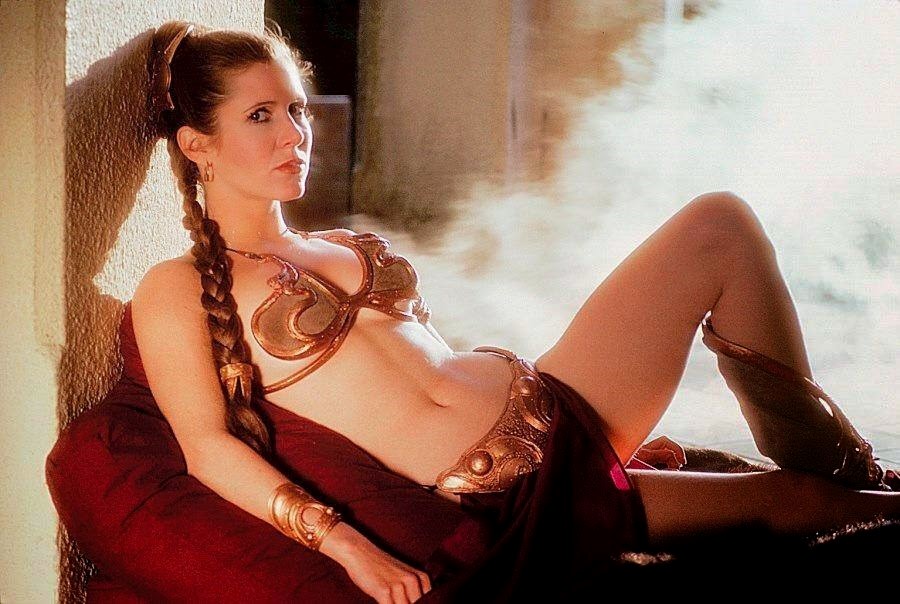 Unfortunately these real-world consequences mirrored the storytelling, as Return of the Jedi also marked the beginning of the Star Wars franchise’s now extensive track record of undermining its female characters and failing to bring their stories to conclusions worthy of their importance. In Episode VI and Episode III, the Legends tales and The Clone Wars, too many female characters deserved better writing and better fates.
Unfortunately these real-world consequences mirrored the storytelling, as Return of the Jedi also marked the beginning of the Star Wars franchise’s now extensive track record of undermining its female characters and failing to bring their stories to conclusions worthy of their importance. In Episode VI and Episode III, the Legends tales and The Clone Wars, too many female characters deserved better writing and better fates.
Lucasfilm, of course, can and should do better. FANgirl’s February 2016 post Rey At Risk: Keeping Lucasfilm Accountable to Her Potential emphasized the need to break the patterns of the past for the Sequel Trilogy’s new young Jedi heroine, especially in Episode IX’s conclusion of her arc. After Fisher’s tragic and untimely passing, our January 2017 post Leia At Risk: Grief, Nostalgia, and Mythic Storytelling urged Lucasfilm to ensure that Leia’s importance as a character in the franchise’s story not be abandoned in Episode IX, and that the culmination of her own Sequel Trilogy arc receive its intended conclusion. Though it undoubtedly would be controversial with some fans, Why We Support Recasting General Organa explained our view that the positives outweigh the negatives – especially to avoid yet again falling short in the conclusion of an iconic Star Wars female character’s story arc.
Until the release of The Last Jedi, though, it was difficult to assess what the storytelling shape of Leia’s three-movie arc would involve, and what would be lost for the character and the fans if Leia were to be written out of Episode IX. With both The Force Awakens and The Last Jedi to analyze, the stakes have become much clearer – and the cost of abandoning Leia’s role in the story now appears even greater than we had previously anticipated.
The Sequel Trilogy Ends the Skywalker Family Saga
From the announcement in late 2012 that Episode VII, VIII, and IX would be made and continuing through the release of The Last Jedi over five years later, the Sequel Trilogy prominently and consistently has been described by official sources as the continuation of the Skywalker family saga created by George Lucas in the Original and Prequel Trilogies. The ongoing usage of this label – including by Disney CEO Bob Iger, Lucasfilm president Kathleen Kennedy, and press releases from starwars.com – definitively indicates that the family drama developed over the course of the previous eight movies will, and has been meant to, culminate and resolve in Episode IX.
The Last Jedi sets up the characters and storytelling elements in play for the final installment of the Skywalker family saga. Luke Skywalker is dead. Leia Organa is the leader of a small band of Resistance fighters and mentor to the sole remaining Jedi. Kylo Ren, formerly Ben Solo, rejected the offered opportunity of redemption and chose to remain on the dark side – and is now the Supreme Leader of the First Order. His counterpart in the light, Rey of Jakku, is not a Skywalker or a Solo, but the daughter of nobodies empowered by the Force to balance the rising darkness in Kylo Ren – and as the last Jedi she possesses some brief training from Luke and the sacred texts she scavenged from Ahch-To’s ancient library.
After Episode VIII, only two living Skywalkers remain: a mother and her son. In Episode IX the fate of the third-generation Skywalker, the resolution of the family conflict created by his fall to the dark side and reverence for his grandfather, and the legacy that the Skywalker family will leave in the galaxy must be decided by these two characters. Leia in the light, Kylo in the dark, with those elements hanging in the balance between them.
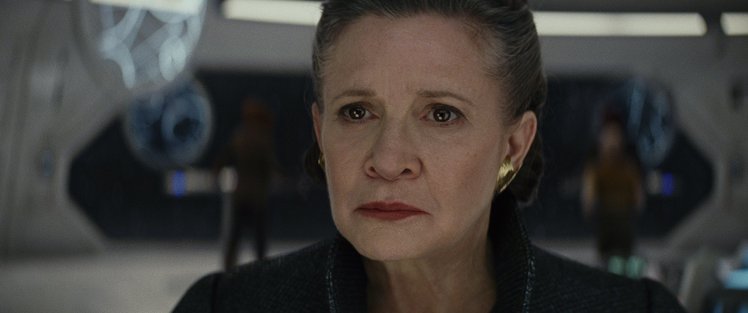 From this perspective, it is easy to see why Kathleen Kennedy, Rian Johnson, and others have publicly confirmed that Leia was intended to have a substantial role in Episode IX. With the story dynamics now in place, Leia’s role is irreplaceable.
From this perspective, it is easy to see why Kathleen Kennedy, Rian Johnson, and others have publicly confirmed that Leia was intended to have a substantial role in Episode IX. With the story dynamics now in place, Leia’s role is irreplaceable.
Leia’s role in Episode IX cannot simply be shifted to Luke. It would not be surprising to see an ethereal Luke appear in the film, of course, providing a brief and meaningful interaction on par with Obi-Wan in Return of the Jedi or Yoda in The Last Jedi. The part intended for Leia, though, is far too substantial, and too extensive in screen time, to be carried by a Force ghost. Even more problematic, giving Leia’s role to Luke would perpetuate the franchise’s troubling past in sidelining female characters to emphasize their male counterparts. Worst of all, the franchise would lose its first movie storyline centered on a mother – Leia and Kylo – after decades of focusing on stories about fathers.
Nor can Leia’s intended role in Episode IX simply be given to Rey in her stead. That option would have been available – in fact, it might have been the center of the story – if Rey were Leia’s daughter fulfilling a sister/brother, light/dark, hero/villain story arc in the family’s inter-generational space opera soap opera. But after The Last Jedi, Rey is a no one from nowhere. She may be a great heroine for the galaxy, but she is not a Skywalker or part of that family drama.
The Sequel Trilogy appears to be incorporating other themes of heroism and family in which Rey can play a part. One is the rejection of dynastic heroism in favor of the idea that anyone can be a Jedi hero. From this perspective, Kylo Ren represents the toxicity of privilege and lineage as social constructs, and the story is subverting hierarchy and legacy in favor of an egalitarian vision of heroism. But this theme does not resolve the Skywalker family saga so much as declare that it should never have been the story in the first place – which hardly seems consistent with the forty years of the Star Wars franchise and its marketing.
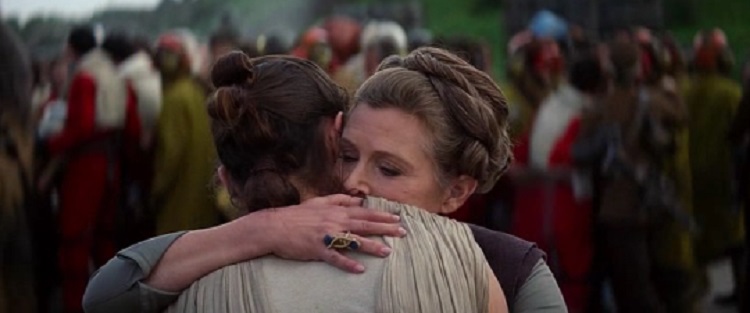 Similarly, Rey’s role in the story reflects the theme of “found family” also seen in Star Wars Rebels. Just as the crew of the Ghost are connected by bonds they chose rather than by genetics, so too Rey has left behind her vigil on Jakku for a new found family in the stars. Ironically, though, her entire experience in discovering these bonds – from BB-8 to Finn to Han and Chewie to Leia to Luke to Poe – originates with Leia sending Poe to Jakku and concludes with Leia reassuring Rey aboard the Millennium Falcon after Rey’s reunion with Finn and greeting with Poe. Even if Rey is not a Solo or a Skywalker, her found family is the one Leia’s leadership and actions created, reflecting just how indispensable Leia is to the Sequel Trilogy’s story.
Similarly, Rey’s role in the story reflects the theme of “found family” also seen in Star Wars Rebels. Just as the crew of the Ghost are connected by bonds they chose rather than by genetics, so too Rey has left behind her vigil on Jakku for a new found family in the stars. Ironically, though, her entire experience in discovering these bonds – from BB-8 to Finn to Han and Chewie to Leia to Luke to Poe – originates with Leia sending Poe to Jakku and concludes with Leia reassuring Rey aboard the Millennium Falcon after Rey’s reunion with Finn and greeting with Poe. Even if Rey is not a Solo or a Skywalker, her found family is the one Leia’s leadership and actions created, reflecting just how indispensable Leia is to the Sequel Trilogy’s story.
For Episode IX to resolve the third trilogy of the Skywalker family saga, it must include Leia as an active principal character in the story. The galaxy includes powerful light and powerful darkness, and so does the Skywalker family. Without Leia, Episode IX has only darkness – the family is imbalanced with solely Kylo Ren. Even if he were to somehow return to the light through his choices in Episode IX, after his actions before and during Episodes VII and VIII he will never represent the core theme of the Skywalker legacy: hope.
The theme of hope is the title of the first Skywalker saga film, and the plea in Leia’s iconic holographic message. It is what Leia never loses in Episode V, and restores to Han and then to the galaxy in Episode VI. It is how she perseveres in Episode VII despite the tragedy of her son’s fall and the rise of the First Order from the ashes of the defeated Empire. It is the one word Leia speaks in Rogue One. And it is the source of Luke’s failure as a Jedi Master, giving up his hope after the fall of Ben Solo and the training temple massacre. Luke’s final deed makes him a legend again, and provides a spark of hope to an apprehensive galaxy – but is Leia who always has been the symbol of persistent and unyielding courage in the face of seemingly insurmountable opposition, never giving up the fight no matter how impossible the odds. The Skywalker saga should end on that note, and Leia is the only character left who can strike it.
Leia Organa and the Hero’s Journey: Her Final Heroic Cycle
As discussed in our series of posts analyzing the Hero’s Journey in The Last Jedi, after an initial origin story progression through the monomyth framework, like Luke in A New Hope or Rey in The Force Awakens, characters may undertake further cycles in their heroic development. Each iteration of the journey brings the hero closer to the true self within. For Luke Skywalker, The Last Jedi brings the final culmination of his story in one more heroic cycle, a Wizard’s Journey in which he achieves transcendental mastery of the Force after years of self-imposed exile in denial of his true calling. The Last Jedi also lays the foundation for the final cycle in Leia Organa’s lifetime of heroic journeys to pay off in Episode IX.
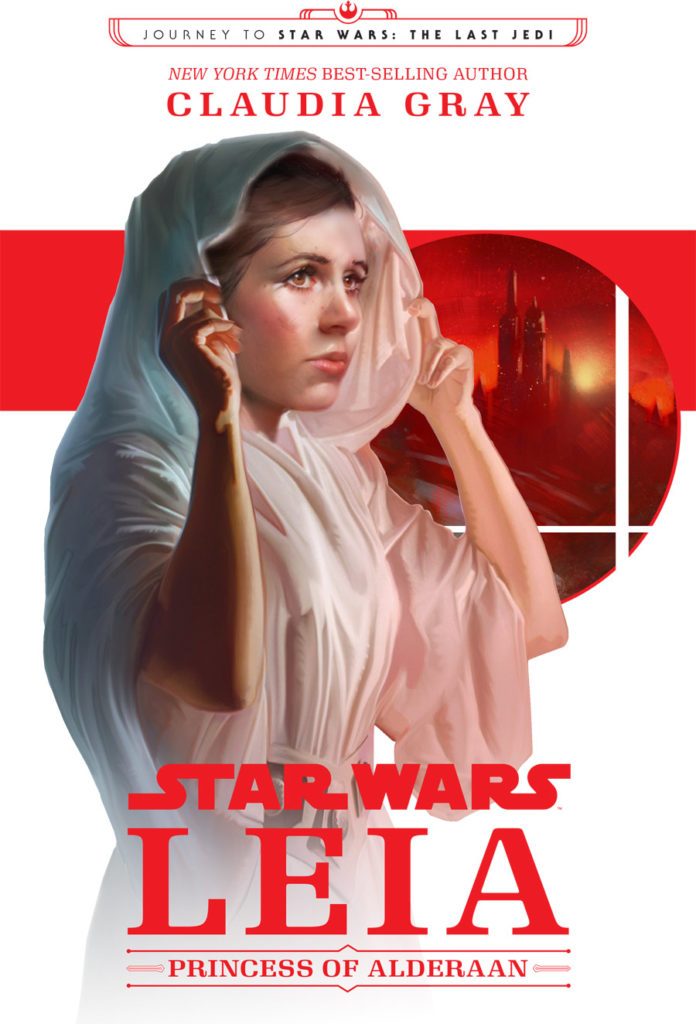
Unlike her brother Luke, Leia has rarely been the central character in Star Wars storytelling. For that reason, her story arcs often have not portrayed, on screen or on the page, a full progression through all of the stages of the Hero’s Journey. Nevertheless, Leia’s iterations through cycles of heroic journeys are identifiable across the span of her tales.
In her youth Leia’s Ordinary World is the life of a princess, a war orphan adopted into the royal house of Alderaan at the end of the Clone Wars. Although some of her training in fact is preparing her in ways she does not recognize for future events she does not anticipate, much of Leia’s education and tutelage is directed toward preparing her to someday assume the title of queen and take the throne. On this path, Leia’s upbringing honors her mothers – her birth mother, Padmé Amidala, and her adoptive mother, Queen Breha, both of whom are just and fair planetary leaders who serve humbly as noble leaders of their people.
But civil war is coming, and Leia’s role in the fight is unavoidable. Her Call to Adventure comes in the novel Leia, Princess of Alderaan, when Leia first begins to appreciate the true nature of the Imperial government’s tyranny and first realizes that her parents are leaders in the covert activities preparing a rebellion against the Empire. To join this fight, Leia must be something more than a princess or queen; she must become a rebel, too. On that path, Leia’s journey reflects her fathers – Anakin Skywalker, a bold and effective general in the Clone Wars, and Bail Organa, who maintains a public persona of allegiance and humanitarian relief operations while secretly organizing a violent military uprising.
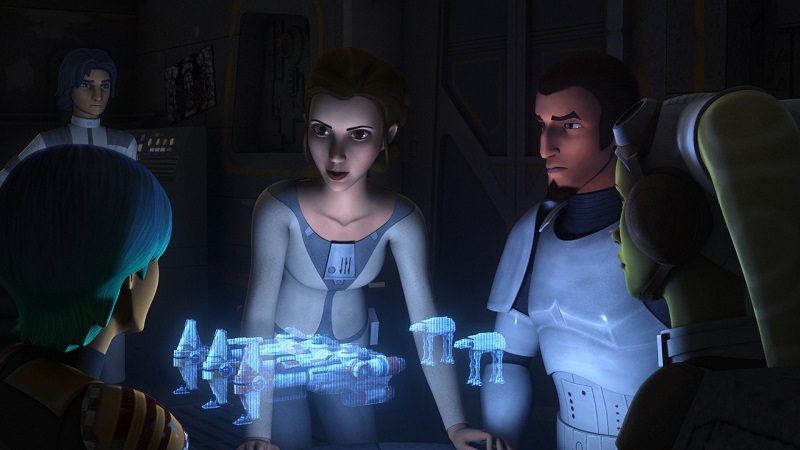 Leia’s first cycle in the Hero’s Journey marks her transition from royalty to rebel. In the Star Wars Rebels episode “A Princess on Lothal,” for instance, Leia uses the cover of her diplomatic status as a member of the Imperial Senate to deliver ships to the Ghost crew’s rebel cell. The events of Rogue One and A New Hope bring Leia’s first transformation to conclusion. Bail dispatches Leia to Tatooine to retrieve Obi-Wan Kenobi from his two-decade exile. After watching the Tantive IV flee Scarif with the stolen Death Star plans aboard, Darth Vader finally has the evidence to declare her “a member of the Rebel Alliance and a traitor.” The Senate is disbanded, removing the last pretense of representative government. Alderaan is obliterated, killing Bail and Breha and leaving Leia as heiress to a non-existent palace. The Rebellion follows its first victory at Scarif with another at Yavin, destroying the Death Star with Leia standing alongside the generals in the command center.
Leia’s first cycle in the Hero’s Journey marks her transition from royalty to rebel. In the Star Wars Rebels episode “A Princess on Lothal,” for instance, Leia uses the cover of her diplomatic status as a member of the Imperial Senate to deliver ships to the Ghost crew’s rebel cell. The events of Rogue One and A New Hope bring Leia’s first transformation to conclusion. Bail dispatches Leia to Tatooine to retrieve Obi-Wan Kenobi from his two-decade exile. After watching the Tantive IV flee Scarif with the stolen Death Star plans aboard, Darth Vader finally has the evidence to declare her “a member of the Rebel Alliance and a traitor.” The Senate is disbanded, removing the last pretense of representative government. Alderaan is obliterated, killing Bail and Breha and leaving Leia as heiress to a non-existent palace. The Rebellion follows its first victory at Scarif with another at Yavin, destroying the Death Star with Leia standing alongside the generals in the command center.
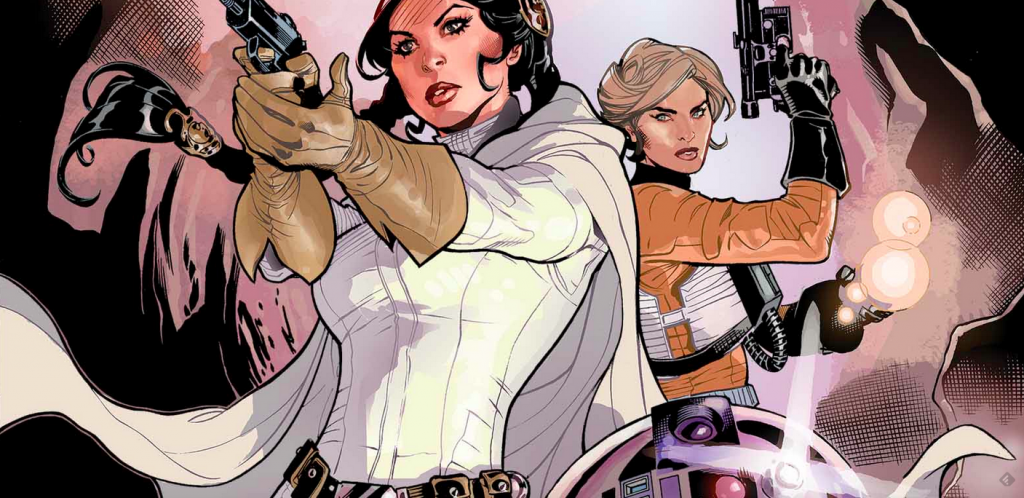 For the next few years, Leia serves as a key leader in the Rebellion. Marvel’s comics, including the principal Star Wars title as well as the Princess Leia mini-series and other appearances, emphasize the high degree of trust that the Rebellion places in her, from Mon Mothma, the Alliance’s chancellor-in-exile, to the pilots and soldiers who serve under Leia on combat and covert missions. In The Empire Strikes Back and Return of the Jedi, Leia plays critical roles in the Battle of Hoth and the Battle of Endor. Although the late term of her pregnancy keeps her away from the military engagement at the Battle of Jakku that results in the surrender of the Imperial military to the New Republic a year after Endor, the novels Life Debt and Empire’s End confirm that Leia remains an important figure in the military and political leadership rising to take the place of the defeated Empire.
For the next few years, Leia serves as a key leader in the Rebellion. Marvel’s comics, including the principal Star Wars title as well as the Princess Leia mini-series and other appearances, emphasize the high degree of trust that the Rebellion places in her, from Mon Mothma, the Alliance’s chancellor-in-exile, to the pilots and soldiers who serve under Leia on combat and covert missions. In The Empire Strikes Back and Return of the Jedi, Leia plays critical roles in the Battle of Hoth and the Battle of Endor. Although the late term of her pregnancy keeps her away from the military engagement at the Battle of Jakku that results in the surrender of the Imperial military to the New Republic a year after Endor, the novels Life Debt and Empire’s End confirm that Leia remains an important figure in the military and political leadership rising to take the place of the defeated Empire.
With peace secured, Leia’s next heroic cycle returns her to where she began: a leader of citizens rather than a leader of soldiers. She represents the Alderaan sector in the New Republic Senate, her influence assured by her planet’s sacrifice and the fame of her own commitment to the cause of freedom in the galaxy. Two decades later in the novel Bloodline, Leia is viewed as a legitimate contender to become First Senator when the revelation that she is the daughter of Darth Vader brings an end to her political career.
 Yet Leia’s next heroic cycle, from Breha back to Bail, already had been underway. She understands that the conflict between the Populists and the Centrists in the legislature is merely part of a larger struggle over the future of the New Republic and the galaxy. Intelligence reports and other information convince her that a military rearmament in violation of the peace treaties is taking place. Though it does not occur in the circumstances she had intended, Leia’s resignation from the Senate enables her to form the Resistance, beginning the process of preparing for military opposition to the forces of evil massing to strike back. By the time of The Force Awakens and The Last Jedi, General Organa has returned to another cycle of her second identity: a leader of the Rebellion now the leader of the Resistance.
Yet Leia’s next heroic cycle, from Breha back to Bail, already had been underway. She understands that the conflict between the Populists and the Centrists in the legislature is merely part of a larger struggle over the future of the New Republic and the galaxy. Intelligence reports and other information convince her that a military rearmament in violation of the peace treaties is taking place. Though it does not occur in the circumstances she had intended, Leia’s resignation from the Senate enables her to form the Resistance, beginning the process of preparing for military opposition to the forces of evil massing to strike back. By the time of The Force Awakens and The Last Jedi, General Organa has returned to another cycle of her second identity: a leader of the Rebellion now the leader of the Resistance.
Across those five decades and four heroic cycles, however, there is one part of her that she has yet to incorporate into her life’s path. To find her true self, she must acknowledge and accept that last part of her. Leia Organa is strong in the Force.
Her strength in the Force and her heritage as the daughter of a great Jedi Knight is the Wizard’s Journey set up for Leia in Episode IX. The Last Jedi makes two moves in the story which lay the foundation for Leia’s Wizard’s Journey to come to fruition.
 First, she passes the torch of the Resistance. Leia’s insistence that Poe Dameron learn the true nature of leadership is important because Leia knows she will not always be there to lead. Though the cost is steep, the movie ends with Poe’s wisdom acquired – and Leia ratifies it with the last words she speaks onscreen to the Resistance fighters: “What are you looking at me for? Follow him.”
First, she passes the torch of the Resistance. Leia’s insistence that Poe Dameron learn the true nature of leadership is important because Leia knows she will not always be there to lead. Though the cost is steep, the movie ends with Poe’s wisdom acquired – and Leia ratifies it with the last words she speaks onscreen to the Resistance fighters: “What are you looking at me for? Follow him.”
Second, she finds her place in the spiritual realm of the Force. Leia is the only survivor of the destruction of the Raddus’ bridge because her ability to draw upon the Force enables her to save her own life instead of dying in the vacuum of space. Leia may appear to medical personnel to be unconscious, but there is no reason to believe she is not using meditative techniques in the Force to help heal herself. The monitors become more active when she senses Luke reaching out to her in the Force, and she whispers his name. Later, she realizes the unlimited potential of the Force when her brother’s astral projection appears to her at Crait to apologize and say goodbye before distracting Kylo Ren with an overwhelming display of Force wielding. By the end of The Last Jedi Leia has connected with the Force like never before in her life.
The last scene on the Millennium Falcon symbolizes Leia’s readiness for transformation into her ultimate heroic cycle. Rey – who is the last Jedi – holds the severed halves of Anakin’s lightsaber in her hands and asks, “How do we rebuild the Rebellion from this?” Leia – who has led the Rebellion and the Resistance – places her hand atop Rey’s on the lightsaber and replies, “We have everything we need.”
By accepting the final piece of her true self and synthesizing it with the lessons she has learned from the prior iterations of her heroic journeys, Leia will find one more role to play. Leia has done everything she can to build the Resistance and enable it to continue to fight to restore and defend the New Republic. What remains is to restore the New Jedi Order and return the guardians of peace and justice to the galaxy. Just as Han mentored Rey in The Force Awakens and Luke shaped her path in The Last Jedi, Leia will guide Rey’s further development in Episode IX. Together, the two women will rebuild the Jedi Order.
In making this synthesis, Leia also finally will deliver on the potential of a Heroine’s Journey in Star Wars movies. Though Rey’s origin story in The Force Awakens brought a new Force-strong heroine into the story, her arc followed all of the beats of the traditional Hero’s Journey undertaken by Luke and Anakin. Leia’s prior heroic cycles – her mothers’ political leadership and her fathers’ military leadership – leave her poised to undergo the final stages of the Heroine’s Journey. In stepping away from a role in war once and for all, she is Healing the Mother/Daughter Split that occurred when she first left behind her ordinary world as a princess to become a rebel. In reviving the Jedi Order from its near-total annihilation by her father and her son, and abandonment by her brother, she is Healing the Wounded Masculine. In building a New Jedi Order that learns from the mistakes of the old and evolves into something new, she is moving Beyond Duality, an act of Healing the Feminine/Masculine Split. Together with Rey, Leia would be using the teachings – and the tragedies and failures – of three generations of male Jedi leaders to reconstruct the Order in a new image, one that can draw strength from the values of heroines as well as heroes.
This Wizard’s Journey for Leia is a tale thirty-five years in the making. Ever since Return of the Jedi’s revelation that Leia is Luke’s sister and that she too has strength in the Force, millions of women and girls have dreamed of seeing Leia wielding a lightsaber. They have envisioned her using the Force. They have imagined her protecting the galaxy as a Jedi Knight.
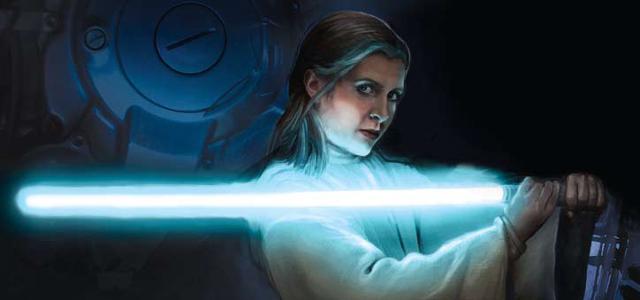 To bring this dream to fulfillment would finally overcome thirty-five years of momentum from men telling Leia’s story, holding her back and denying her the true self within. In the Legends novels storyline that began publication in 1991, Leia did not complete her training and become a Jedi Knight until books released in 2005, coincidentally set thirty-five years after Endor on the in-universe timeline. George Lucas’ concurrent Prequel Trilogy films explored other roles for Jedi than simply warriors, from diplomats and investigators to librarians and negotiators, refuting any notion that Leia would have to be pigeonholed into the same kind of Jedi role as Luke, Obi-Wan, or Yoda in the Original Trilogy. Yet the three men who wrote The Force Awakens once again denied Leia her true self, creating her story in the film – and her backstory leading up to it – as solely one of politics and military leadership rather than spiritual development. Rian Johnson has admitted in interviews that Leia using the Force in The Last Jedi was not a product of his own imagination for the character, but rather the urging of Kathleen Kennedy to give Leia her due. And men are writing Episode IX, as well.
To bring this dream to fulfillment would finally overcome thirty-five years of momentum from men telling Leia’s story, holding her back and denying her the true self within. In the Legends novels storyline that began publication in 1991, Leia did not complete her training and become a Jedi Knight until books released in 2005, coincidentally set thirty-five years after Endor on the in-universe timeline. George Lucas’ concurrent Prequel Trilogy films explored other roles for Jedi than simply warriors, from diplomats and investigators to librarians and negotiators, refuting any notion that Leia would have to be pigeonholed into the same kind of Jedi role as Luke, Obi-Wan, or Yoda in the Original Trilogy. Yet the three men who wrote The Force Awakens once again denied Leia her true self, creating her story in the film – and her backstory leading up to it – as solely one of politics and military leadership rather than spiritual development. Rian Johnson has admitted in interviews that Leia using the Force in The Last Jedi was not a product of his own imagination for the character, but rather the urging of Kathleen Kennedy to give Leia her due. And men are writing Episode IX, as well.
The Star Wars franchise cannot afford to lose the unwavering hope Leia represents, and neither can the story left to be told in Episode IX. Nor can the franchise afford to abruptly truncate Leia’s heroic journeys, eliminating her Wizard’s Journey before it progresses beyond its incipient moments and denying Leia her rightful place in the New Jedi Order rising in Episode IX. The damage to the storytelling and the fandom of abandoning Leia on the cusp of the culmination in her six-movie story arc would be incalculable.
Carrie Fisher has left us, but Leia Organa persists. Recasting the role and giving Leia the role in Episode IX that the character and the story deserves, fulfilling the promise of The Force Awakens and The Last Jedi, is the only way to rightfully honor the importance to Star Wars of both of those amazing and unforgettable women.
.
Related Links
- The Fairy Tale Princess In Empire Strikes Back: Why Leia Is The Gold Standard For Strong Female Heroines (2011)
- Does Slave Leia Weaken or Empower Women? (2011)
- Slave Leia Sells? Amy Schumer, Boy Toys, and the Star Wars Fandom Double Standard (2015)
- Slave Leia Deserves Equal Treatment: Respecting Star Wars Canon (2015)
- Rey At Risk: Keeping Lucasfilm Accountable to Her Potential (2016)
- Leia At Risk: Grief, Nostalgia, and Mythic Storytelling (2017)
- Why We Support Recasting General Organa (2017)
- Leia Organa: Leader of the New Jedi Order (2017)









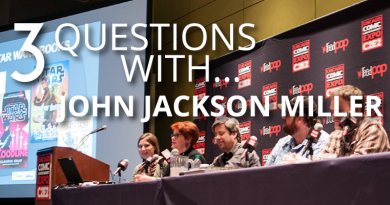
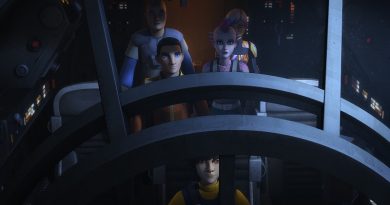

Okay, I haven’t finished reading the article yet (because I’m a slow reader), but I’d like to comment on the first part anyway.
I don’t think Leia’s return is an absolute necessity for Episode IX to succeed. It would be a surprise. A welcome one, but I think there are different ways to conclude the saga. I have a theory which might make sense.
Firstly, I think they’re going to take a more spiritual way with the name ‘Skywalker’. Ben Solo, the only Skywalker descendant, is not coming back, but I think for both twins there is a spiritual successor. Luke’s is Rey and Leia’s is Poe. This in itself is pretty interesting. In my personal humble opinion we don’t see a lot of male-female mentor-apprentice-relationships, especially those where the woman is the mentor. That is one of the reasons I love that Leia is Poe’s teacher and therefore Poe is Leia’s legacy. Everything Poe is after The Last Jedi is a testament to Leia.
I have to end this comment for now. I’ll probably get back to it later.